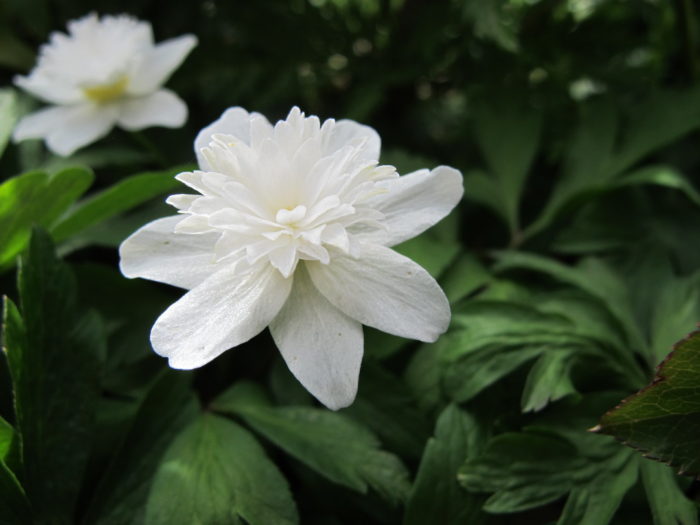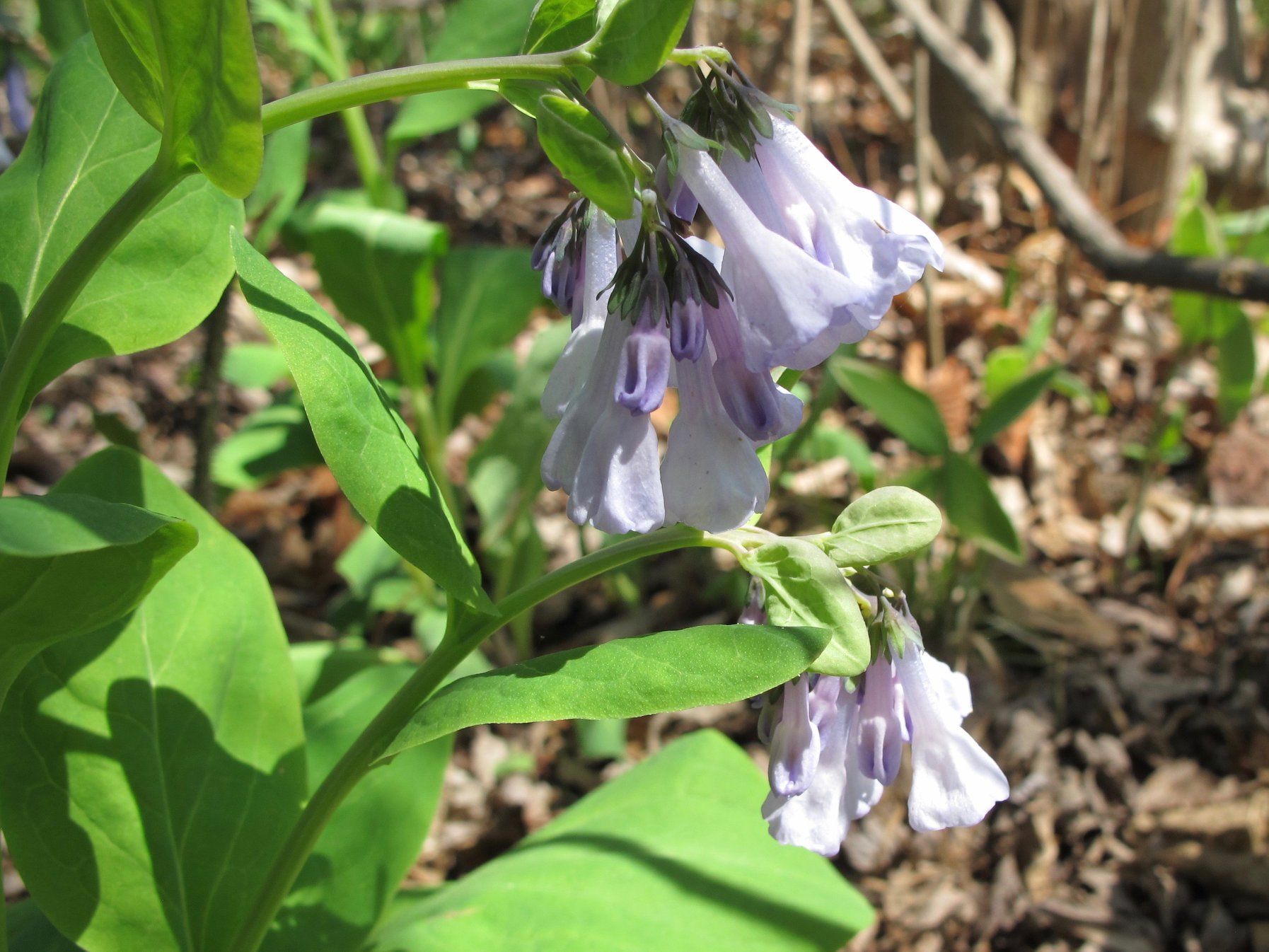
Jim Murrain gardens in Kansas City, Mo., where he and his husband nurture a collection of really beautiful, often unusual plants. Today he’s sharing this assortment of early bloomers that are showing off in their garden. These are all spring ephemerals, which are plants that come up and bloom early. Then they go dormant over the summer, clearing the stage for other plants to fill in later.

Ficaria verna ‘Flora Plena’ (double lesser celadine, Zones 4–8) is the normal, single-flowered version of an aggressive, even invasive weed that seeds around everywhere. But this is the double-flowered version, which is totally sterile, so it never starts seeding into unwanted spaces. It is a true spring ephemeral, coming up early as a low mass of leaves and flowers, and then going totally dormant and vanishing shortly afterward.

Virginia bluebell (Mertensia pulmonarioides, Zones 3–7) is a common woodland wildflower in most of eastern North America, and here it is, showing the usual pink flower buds that turn blue as they mature.

But there are some cool, different forms of Virginia bluebell! This one skips the pink phase and has flowers that are blue from start to finish.

And how about this example with flowers of soft, smokey lavender? It is a beautiful, sophisticated take on this familiar flower.

Anemone nemorosa ‘Vestal’ (windflower, Zones 5–8) is a terrific choice for early color in a shady garden. This selection of the species has beautiful, double, pure white flowers early in the spring. Afterward, it goes totally dormant. Anemones grow from small rhizomes that slowly creep to make patches and drifts. However, it is never aggressive. There are many selections and forms of this species, with white, pink, or blue flowers, all of which are choice additions to the garden.

The double buttercup anemone (Anemone ranunculoides ‘Pleniflora’, Zones 5–8) grows like and wants the same conditions as Anemone nemorosa, but it boasts cheery, bright yellow blooms.

Tired of planting tulips only to have them fade away after one season of bloom? Try growing Tulipa sylvestris (woodland tulip, Zones 3–8). Amenable to sun or shade, this little species of tulip may not be as large and over-the-top as hybrid tulips, but it is vigorous and will come back every year, even seeding around a little if it is happy! And how can you say no to those sunny blossoms?
Have a garden you’d like to share?
Have photos to share? We’d love to see your garden, a particular collection of plants you love, or a wonderful garden you had the chance to visit!
To submit, send 5-10 photos to GPOD@finegardening.com along with some information about the plants in the pictures and where you took the photos. We’d love to hear where you are located, how long you’ve been gardening, successes you are proud of, failures you learned from, hopes for the future, favorite plants, or funny stories from your garden.
If you want to send photos in separate emails to the GPOD email box that is just fine.
Have a mobile phone? Tag your photos on Facebook, Instagram or Twitter with #FineGardening!
You don’t have to be a professional garden photographer – check out our garden photography tips!
Do you receive the GPOD by email yet? Sign up here.
Fine Gardening Recommended Products

The Nature of Oaks: The Rich Ecology of Our Most Essential Native Trees
Fine Gardening receives a commission for items purchased through links on this site, including Amazon Associates and other affiliate advertising programs.

Planting in a Post-Wild World: Designing Plant Communities for Resilient Landscapes
Fine Gardening receives a commission for items purchased through links on this site, including Amazon Associates and other affiliate advertising programs.

Johnny’s Selected Seeds Connecta® Cultivation Kit
Fine Gardening receives a commission for items purchased through links on this site, including Amazon Associates and other affiliate advertising programs.


















Comments
I love all these spring flowers! I went crazy over the species tulips this past fall after trying some the year before. I was told they are deer resistant, which they may be but we have elk as well as deer and the elk did eat the flowers but not the deer.
Lovely selection of spring ephemerals, Jim. And I definitely need to keep in mind your tip about adding Tulipa sylvestris to my spring flower show. Fall of 2016, I succumbed to the beautiful pictures of a color blend tulip collection, went to great effort to plant them and put wire grid over the area (to protect them from squirrels) and got just the one season of bloom from them.The following year was a complete fizzle...one or 2 very anemic looking tulips came back...just enough to remind me of how annoyed I was to have even bothered. So, the more dependable Tulipa sylvestris sound much more satisfying.
Great ephemerals. I've never seen the variants of Mertensia. Subtle differences but nice!
Gorgeous!
Garden1953 - I had a giggle at your comment about the deer not eating the tulips, but ELK did... I won't complain about deer now. : )
Watching some incredible pictures of some unusual plants present at the Jim Murrain gardens has given me a very pleasant experience for me. Pictures of Virginia bluebell especially attracted my attention. It is good to browse https://essayreviewexpert.com/review/edubirdie/ website for reading customers reviews about writing help.
Log in or create an account to post a comment.
Sign up Log in